Mobile gaming has exploded in recent years, with experts predicting 2.4 billion global mobile players by the end of 2019. It already accounts for 47% of the worldwide gaming market, besting console and PC. No wonder we've seen the rise of gaming smartphones, a class of phones that specialize in mobile gaming.
We update this comparison at least once a year. Unlike previous iterations, we're finally seeing a mature gaming phone market. Manufacturers basically threw stuff at the wall to see what would stick with the first generation of gaming phones, but their successors learned from past mistakes and improved. The result is probably the strongest lineup of gaming phones that we've ever had.
Table of Contents
- Comparison Chart
- Chart Key
- Methodology
- Phone 1: Nubia Red Magic 3
- Phone 2: Galaxy S10+
- Phone 3: OnePlus 7 Pro
- Phone 4: iPhone XS Max
- Phone 5: Razer Phone 2
- Summary
Comparison Chart

Key Comparison Points
- SoC: The system-on-a-chip connects all the components of your smartphone. A part of this circuit is the CPU, which affects the performance of games. Currently, Apple has consistently led in this area, although Qualcomm has bridged the gap in recent years.
- GPU: The graphics processing unit is the single most important component for gaming. The GPU renders the images that are displayed on the phone's screen.
- Thermal Cooling: An internal component which helps dissipate heat away from the SoC. With gaming, the SoC works hard to maintain smooth performance, which increases heat. Without thermal cooling, your phone will be faster to reach the point where throttling is necessary, which significantly drops gaming performance.
- Max RAM: The maximum amount of RAM available for the phone. RAM, or random access memory, is temporarily stored data used by other components. To limit stuttering, games use a large portion of the RAM. The more RAM available, the better your game will perform.
- Max Internal Storage: The maximum internal storage available. Games are large files that grow larger over time thanks to updates and save files. You want the highest available capacity so you have enough space for all your favorite games, videos, photos, and apps.
- Flash Storage Standard: Most phones use Universal Flash Storage (or UFS) to manage how data is written and read off the internal storage. This standard continues to improve by adding new faster lanes, which decrease the time it takes to perform these tasks. Faster read and write speeds leads to faster saves and shorter load times as data stored on the internal storage can be accessed quicker.
- Wi-Fi: The highest wireless protocol version supported by the phone. Newer wireless standards offer longer range, more bandwidth, and stronger connections.
- Bluetooth: The highest supported version of Bluetooth. With controllers and wireless headphones connecting via this wireless standard, Bluetooth is important to gaming as it affects the input lag when using a wireless controller. Every phone on our list uses Bluetooth 5, so they have the strongest connection.
- Screen Size: The size of the display. The larger the screen, the more of the game you can view at one time. Larger screens also make the experience more comfortable as you don't have to squint to see details on the screen.
- Display Panel: The type of panel used by the screen. AMOLED is superior to LCD as it creates better image quality and has better contrast between black and white. Overall, AMOLED will give you a sharper image when gaming.
- Screen Resolution: The highest resolution the screen can display. Higher resolution means more pixels being used to create an image. The additional pixels lead to better image quality.
- HDR: High Dynamic Range. This term indicates the display supports a wider range of color and contrast. HDR displays allow bright and dark areas to be displayed properly, as our eyes see it.
- Curved or Flat Display: Whether the screen is curved or flat. Curved displays are notorious for unintended touches, as your palm will touch the screen when using in portrait mode. Flat displays don't have that issue.
- Refresh Rate: How many frames the screen is capable of producing in a second. For reference, 60 Hz is equivalent to 60 frames per second (FPS). When you combine a higher refresh rate with games that support unlocked frame rates, you get a smooth experience as you move in the game.
- Shoulder Buttons: Whether the phone uses pressure-sensitive areas to act as shoulder buttons which can be mapped to buttons on the screen. Since buttons are easier to use than touch controls, this feature can give you an advantage in games oriented in landscape.
- Mouse Support: Whether the phone supports using a mouse. A mouse offers higher precision than touch controls.
- RGB: Whether the phone has an LED light which you customize to display various colors. RGB is not a make-or-break feature, but it's a customization option desired by many in the gaming community.
- Headphone Jack: Whether the phone has a headphone jack, and if so, its location. In a public area, you will need to use headphones to hear the audio, and this port offers better audio quality than Bluetooth. Also, for gamers on a budget, wired headphones are cheaper than their wireless counterparts.
- Stereo Speakers Placement: The location of each speaker. Front-facing speakers are ideal, as the sound is directed toward your ears.
- Battery Size: The capacity of the lithium-ion battery powering the phone. Ideally, the larger the battery, the better the battery life is, although that isn't always the case.
- Gaming Mode: The phone has a dedicated option in which optimizes performance while gaming. While the feature varies, gaming mode will usually allow you to stop notifications and disable auto-brightness. More complex ones will include automatic boosting of RAM and GPU for the current game you are playing.
- Invite Nearby Players: Being able to invite players playing the same game as you when nearby. An iOS feature, this makes it easier to play co-op games with friends or play more competitive games without needlessly searching for usernames.
- Play Games Within Messages: The ability to play mobile games with others within a messaging thread. iMessage supports a host of games, including some that can handle more than two players for those group chat you're in.
- Streaming API: Whether the operating system provides an Application Plugin Interface (API), or framework, for apps and games to record your screen and rebroadcast it. Only iOS supports this feature, allowing for third-party app such as Mobcrush to let you live stream your game to your Twitch audience.
- Screen Recording: The ability to record your screen for game uploads and live stream. Only iOS support this feature natively. Android phones can use one of many screen recording apps available on Google Play, but will have to wait for Android 10 for native support.
- AR Support: Whether the phone supports augmented reality APIs such as ARCore (for Android) and ARKit (for iOS). AR gaming is a growing field of mobile gaming and the backbone behind popular titles such as Pokémon GO.
- Background Audio Processor: The software enhancements that improve the audio quality of the phone. These enhancements will make audio louder and punchier. Dolby Atmos even has different presets, including one for gaming, which increases the bass so explosions and other loud sounds are more profound.
- Support for 60+ FPS gaming: Whether the phone supports gaming on frame rates higher than the standard 60 FPS. For years, because all screens were limited to 60 Hz, games would lock to 60 FPS (or lower), as generating more frames was unnecessary. Thanks to the Razer starting the gaming phone trend, more games have include unlocked frame rates. This means games can generate frames rate as high as the GPU will allow, going up to 120 FPS for the 120 Hz display found in the Razer Phone 2 and ASUS ROG Phone II.
- Connect Xbox One & PS4 Controller: The ability to use your Xbox One (Bluetooth variant) or PS4 controller with your phone. If you own a console, this is the cheapest way to use a controller with your phone, plus it's one that you're already comfortable with. While Android users have had this feature for as long as the Xbox One and PS4 have existed, iPhone users will have to wait for iOS 13.
- Fortnite at 60 FPS: Fortnite is one of the most popular games on all platforms. With nearly 250 million players, it is a game most gamers are playing or were playing. On mobile, 60 FPS isn't supported on all phones. Only a handful of phones qualify for this feature, which provides smoother gameplay.
- Support for Emulators: Emulators are programs which act as console and handheld gaming devices for your phone. With an emulator and a ROM, you can play older console such as Sega Genesis and Super Nintendo on your phone. For iOS users, this process is unreliable. Besides jailbreaking, you can sideload the app, but you'll need to re-sign the app every so often for it to continue to work. If Apple decides to kill the profile, the emulator will not work, and you'll have to find another one.
- Steam Link Anywhere: Steam released the app version of their hardware a while back that allows you to stream your PC games over the web to another device. On iOS, this is limited to your home network, which means you must be at home to use this feature. But on Android, you can stream outside your network so that you can game on the go. As long as your PC is on and you have a reliable internet connection, any game on your Steam Library can be remotely played on your phone.
- PS4 Remote Play: The ability to play your PS4 games remotely on your phone. PS4 Remote Play lets you stream PS4 games to your phone. You do need to be on the same network as your PS4 to use this feature. Natively, there is support for iOS and certain Sony Xperia phones, but with root, you can add this feature to any Android phone via a Magisk module.
- Stadia Support: The gaming platform by Google allows you to play high-end games on your phone, tablet, Chromecast, and PC. Google servers perform all the processing, so your device's hardware doesn't limit the performance. Google Stadia streams PC and console games with low latency at 1080p (and even 4K at 60 fps) on your phone. Only the Google Pixel 3 series (including 3a) will support it this year.
- Project xCloud: Microsoft is releasing a streaming service which lets you play Xbox One games remotely on your phone. It will allow you to stream outside of your home network with low latency with Microsoft's servers doing all the graphical processing.
- Apple Arcade: The upcoming gaming subscription service lets you play over 100 mobile games for around $9.99 a month (Apple hasn't released official pricing). These games can be played on all Apple devices, including your MacBook, iMac, Apple TV, iPad, and of course, your iPhone. So far, it's exclusive to Apple products.
- Share Game Status With Discord: On the Android version of the Discord app, you can share the current game you are playing to your friends using the feature Game Detection. This way, your friends can jump into the same game with you, and you can play together.
- T-Rex Battery Test: A battery test which runs a GPU benchmark test 30 times. The battery discharge is recorded, and the test gives an estimate of your battery duration when performing graphically intensive tasks.
- Manhattan 3.1 (Offscreen) Benchmark: A benchmark which tests the GPU's ability to produce advanced visual effects with OpenGL ES3.1/Open GL 4.3. For comparison purposes, we record the offscreen version as it runs all benchmarks at 1080p.
- T-Rex (Offscreen) Benchmark: A benchmark which tests the GPU's ability to produce detailed textures, materials, complex geometry, motion blur, and much more. For comparison purposes, we recorded the offscreen version as it runs all benchmarks at 1080p.
- Sling Shot Benchmark: This is an OpenGL ES 3.0 test which puts the GPU through a full range of API features, including volumetric lighting, depth of field, and bloom post-processing effects. The test is rendered at 1920 x 1080 ,then scaled to the device's resolution.
- Sling Shot Extreme Benchmark: This test runs on Metal (iOS), OpenGL (Android), or Vulkan (Android). For our testing, we used OpenGL. Similar to the Sling Shot test, the benchmark tests the GPU with a full range of the API, including uniform buffers, depth of field, and multiple render targets. It runs at 2560 x 1440.
- Places to Rest Thumbs: We checked each phone for a place that you can rest your thumbs when not in use. Having a place to rest can prevent unintentional touches that can cause you to perform an action you didn't want. The best places are a top and bottom bezel.
How We Chose These Phones
For our test, we focused solely on phoned released officially in the US within the last year. This mandate eliminated some great options from Huawei and its GPU Boost feature.
We also looked only for phones that are currently available to buy. The ASUS ROG Phone isn't currently available from official retailers in the US. And even though at the time of writing, ASUS announced the ROG Phone II, it will not be available in the US until September 2019.
Because screen size is important to gaming, we focused on the larger version of phones in a series. For example, we choose the Samsung Galaxy S10+ instead of the Galaxy S10 because of its larger display. While the smaller screen will perform from very similarly, the larger display is easier to see. Additionally, for the iPhone XS Max, the larger phone also has a larger speaker for louder sound.
We also limited our selection to the latest releases from each of the major OEM. We didn't feel it would be fair to include multiple listings from the same company, as it would limit the diversity of our list.
Phone 1: ZTE Nubia Red Magic 3
The last flagship ZTE released under their own name in the US was the Axon 7 Pro, a powerhouse phone that offers fantastic performance at its price tag. However, after a battle with the US Government where it (along with Huawei) was banned from the US, then reinstated, it has avoided the market. In the meantime, ZTE released two amazing phones under the Nubia brand, the latest being the best gaming phone available on the market.
What makes the Red Magic 3 so special is its price to performance ratio. You get so much of a phone for a price tag that is almost half that of most phones on our list. But it's not just cost, this has all the features you'd expect from a gaming phone in 2019, and then some.
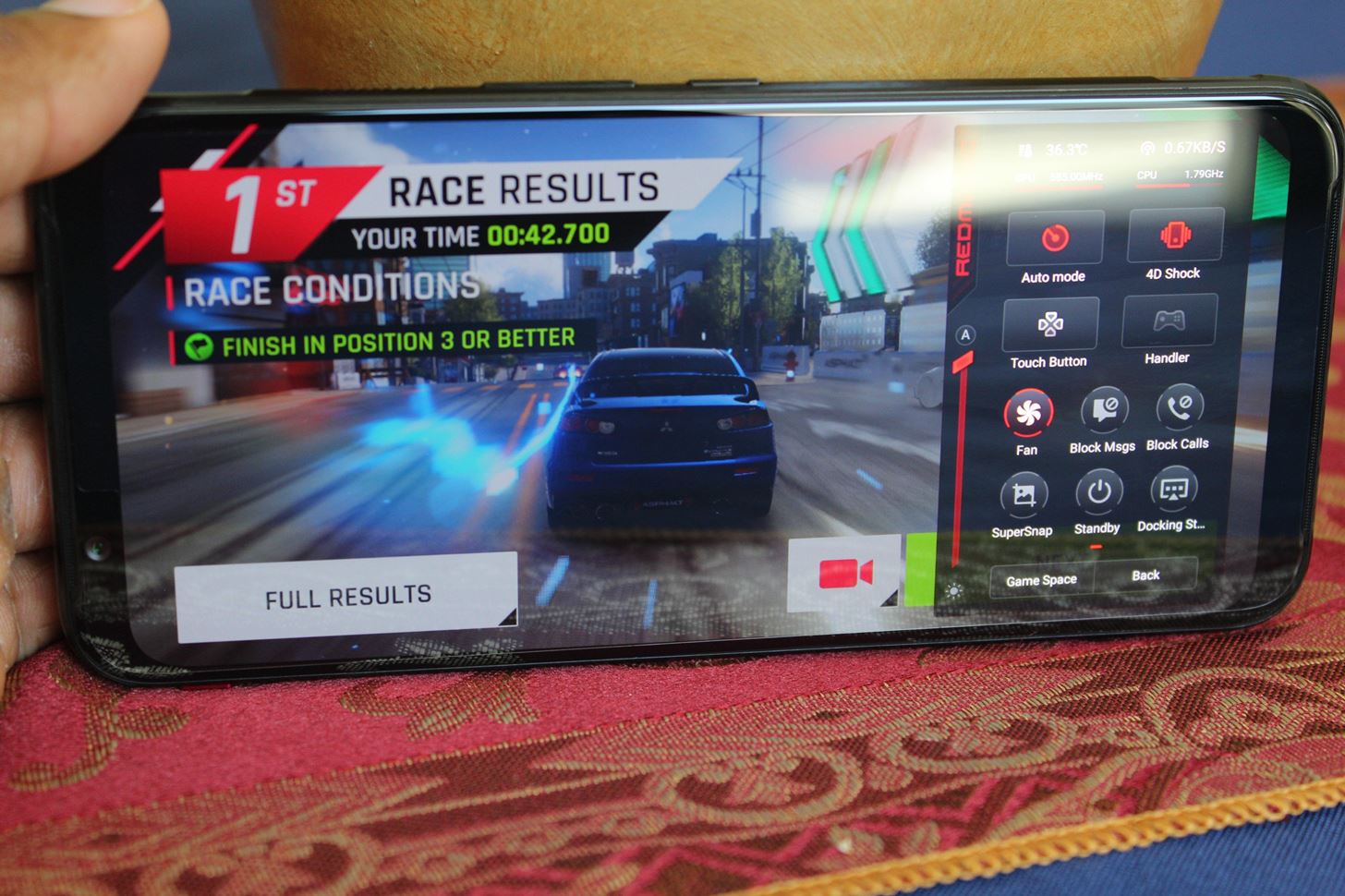
Let start with its processor. Like every Android flagship released in the US in 2019, it uses the Qualcomm Snapdragon 855. This is a 7 nm processor that uses a new core configuration, with one core clocked at 2.84 GHz, three other cores set to 2.42 GHz, and four additional weaker cores at 1.8 GHz. This configuration gives your phone enough power to play graphically intensive games while conserving power when performing simpler tasks. This SoC has the best GPU on the market, the Adreno 640.
Even though the 7 nm processor reduces heat better than its predecessor, ZTE has improved this by adding the world's first fan in a phone. The Red Magic 3 has both heat pipes to draw heat away from the SoC, and a fan to exhaust heat outside the phone. According to ZTE's testing, this improves CPU max runtime by 900% compared to other smartphones. It also reduces the CPU core temperature by 16°C. This active cooling keeps the phone cool to the touch despite gaming on it for hours at a time.

This SoC is combined with up to 12 GB of RAM. Only two other phones offer this much RAM and both charge hundreds more for it. Most games don't even use half of this, making it possible to live stream your game at the same time without a hit to performance.
Powering this phone is a 5,000 mAh battery. This is the largest battery capacity of any phone on our list. Such a large battery will last you throughout even the most extended gaming session thanks to its resolution being limited to 1080p. And when your phone is low on battery life, you can quickly charge it back up thanks to its 18 W fast charger.
Speaking of the display, the Red Magic 3 runs at 90 Hz. This means as long as the game supports higher refresh rates, you can game up to 90 FPS. This means animations are smoother as you transition into the game's world. It also has 240 Hz touch response rate. This stat means that animations start faster, as the screen registers input 2.6 times faster than the screen's refresh rate. The display is also large at 6.65 inches, and it's an AMOLED panel, so it has top-notch picture quality and supports HDR for games.
Then there's the Gaming Port. Along the side edge of the phone is a port which lets the Magic 3 connect to the Magic Adapter, a $46.90 adapter that provides an additional three ports to the phone: a headphone jack, USB-C charging port, and 100 Mb Ethernet port.
Game Space 2.0 is this phone game's mode, and it is one of the best on the market. With Game Space 2.0, you can monitor stats in real-time for the games you're running, customize performance settings, block notifications, and so much more.

One thing to note is the purchasing process is a bit problematic. When purchasing the phone for our testing, we found the website to be a bit sketchy compared to the purchasing experience on Amazon. And because ZTE nubia isn't making this phone available anywhere else, you are forced to deal with the transaction through their website. While we were able to successfully purchase the phone with no issue, just be warned the process might send up some red flags for security-conscious buyers.
Another thing to note is that this phone has no IP rating and no NFC. The latter will affect more people as more and more of us become reliant on mobile payments each year. So if you do use Android Pay or Android Beam, be aware this phone won't have those features. Additionally, because this is the first pair of ZTE nubia phones in the US, we don't know what upgrade cycle timing will be like. So far, we have heard nothing in regards to Android 10. While it is still fairly new and things could change, there is a chance this phone doesn't receive Android 10 until late next year.

There are many more gaming features to this phone — in fact, too many to mention here. Even if this phone were double the price, it would be a great value. But at $479, you can't pass up this phone. If you love mobile gaming, there's just too much phone here to ignore. ZTE has clearly watched the market, and the result is a phone that not only improves gaming but gives you an edge over the competition.
Phone 2: Samsung Galaxy S10+
The Samsung Galaxy S10+ isn't a gaming phone exactly. It's more a great phone that happens to be good at gaming. Thanks to its top tier specs and Samsung's recent push into the mobile gaming industry, the Galaxy S10+ delivers excellent performance on any game found on the Play Store. However, unlike other smartphones, it doesn't skimp in other areas.
First off, let's talk about the specs. The S10+ has a max configuration of 12 GB RAM and 1 TB storage. That's terabyte with a "t" — double the storage of the next highest offering and 4 GB more RAM. It even supports expandable storage, so at the time of writing, you can expand that storage to 2 TB. That's more storage than I need for my Xbox One. This is paired with the Qualcomm Snapdragon 855, the latest and greatest from Qualcomm, which nearly as fast as Apple's A12 Bionic.

It's the only phone on our list that supports Wi-Fi 6 (aka 802.11ax) and its theoretical max speed of 9.6 Gbps. Wi-Fi 5 (aka 802.11ac), which is found on all other phones on our list, is limited to 3.5 Gbps. The new version also more secure and can create a stronger connection with compatible devices. With a compatible router, you can have the most reliable connection in your lobby and will never have to worry about lag.
Because of Samsung's popularity, it's no surprise this is one of the handful of phones that supports 60 FPS gaming on Fortnite. With the additional 30 frames, animations will be smoother as you rake up bodies and try to survive the battle royale.
As an Android device, you can find emulators on the Play Store for nearly every past console and handheld. It also supports Steam Link Anywhere, so you can play games from your Steam library anywhere you go. And no need to use touch controls, you can easily connect your Xbox One or PS4 controller via Bluetooth for a better experience.


This is also a beastly device when it comes to gaming performance. On 3DMark's Sling Shot, it scored a 7,290. Only the OnePlus 7 Pro came close, with most phones losing by at least 1,000 points. The result was the same on Sling Shot Extreme.
As I said in the beginning, the Galaxy S10+ is the phone of choice if you love to game but also use your phone for other things. It has all the credentials of a gaming phone, a large amount of RAM, a large screen, and a fast GPU. But it also has one of the best displays on the market and one of the best cameras. It doesn't have some of the niche gaming features (no RGB here), but that might not be a bad thing. Not every gamer wants their phone to scream gaming, and this phone doesn't.
Phone 3: OnePlus 7 Pro
OnePlus' motto is Never Settle. Starting with the OnePlus One, the company has designed phones that challenge the traditional flagship, by offering the same specs at a fraction of the price. As components increase in price and the team gets larger, the phone's gotten more expensive. The average user has also changed, no longer willing to settle for a 1080p display. That's why OnePlus shocked us all with the 7 Pro, which for the first time, truly embodies their motto.

The OnePlus 7 Pro has specs that would make any tech enthusiast smile. The latest Snapdragon 855 SoC with an Adreno 640 GPU. Up to 12 GB RAM and 256 GB storage. A 6.67-inch 1440p AMOLED display with 90 Hz refresh rate, HDR support, and a DisplayMate rating of A+. Stereo speakers and a 4,000 mAh battery. Even if you're not a tech enthusiast, you can surely see how that spec sheet is special.
This is the phone OnePlus users have dreamed about, especially when you consider its price. Its highest configuration is the same price as the entry price for the Galaxy S10e and iPhone XR — the cheapest flagship models offered by Samsung and Apple, respectively.
And it's because of these very specs that the OnePlus 7 Pro is terrific for gaming. With all that RAM combined with the Adreno 640 GPU, you'll have no problems running any graphical effects and textures a mobile game requires. And thanks to its 90 Hz refresh rate, if the game supports uncapped frame rate, you can enjoy the smoothness of up to 90 fps. Even if the game doesn't, there's a good chance you can force 90 fps anyway.

All that power is also reflected in benchmarks. In Sling Shot, the OnePlus 7 Pro managed the second-highest score, a mere 96-point difference between it and the leader. In Sling Shot Extreme, the story was the same, as it once again achieved second place in an even closer race, only 6 points behind.

So why is the OnePlus 7 Pro ranked third? Well, first understand that this is third out of hundreds of phones that are on the market. But it was bested by two phones because it lacks gaming features. Outside of its gaming mode and Fnatic mode, there aren't any gaming-centric features. No shoulder triggers, no RGB, no detailed GPU stats while gaming. That's because OnePlus 7 Pro isn't a gaming phone. Instead, it is a great smartphone that happens to be great at gaming.
Phone 4: Apple iPhone XS Max
As with most of our rankings, there are usually three or four Android devices and the latest from Apple. Since Apple is the sole manufacturer of iOS devices, it is generally limited to one entry on our roundup, and gaming is no different.
Now, you are probably wondering why is the iPhone XS Max so low? It has X feature or does X things better than any Android smartphone. The thing is, since Apple only makes one series of phone per year, it has to appeal to all groups. Which means it will lack the specialization of a "true" gaming phone. Combine that with the fact that iPhones fare poorly in the specs department, and you can understand its placement.

Let's start with the good. iOS is a better platform for mobile gaming. iOS usually gets A+ titles months ahead of Android and games will work well on all its smartphones, as there are fewer models to optimize for. Expanding on this is the Apple Arcade, a new subscription service which acts similarly to Microsoft's Xbox Game Pass. For around $9.99 a month, you get access to 100+ mobile games — an excellent value, as it opens up gamers to a host of games they would otherwise never get to enjoy.
Then there is the Apple A12 Bionic SoC. This is the fastest SoC on the market, crushing the best offerings from Qualcomm, Samsung, and Huawei each year for several years in CPU performance. It loses in the GPU department, but as gaming requires a combination of CPU and GPU processing, it more than makes up for its lagging GPU with its CPU.

There is also the Game Center. This iOS feature allows you to manage all games on your system. It also lets you invite players nearby to the game you are playing, making it easier to play with friends. Then there is iMessage, which let you play games inside of your messaging threads (including group chats).
iOS is the only platform that allows developers to access your screen for live streams within the app directly. There's also native support for screen recording, unlike most Android phones which require a third-party app. It's also one of only two phones on our list which support Fortnite at 60 FPS. And besides select Xperia phones, the only way to officially play your PS4 games on your phone is with an iPhone.
While the iPhone XS Max doesn't lack heavily in any department, there are simply better options available for gamers. There are phones with higher resolution, higher refresh rates, shoulder buttons, and headphone jacks. Thanks to the open nature of Android, emulators can be found on the Play Store. For iOS, you have to sideload them, which isn't an easy task (and can be killed by Apple at any time). And because of its lagging GPU performance, gaming just won't be as good as on an optimized Android phone (optimized is vital, as many games aren't optimized for specific Android phones).
One big advantage the iPhone does have is its performance. In our benchmarking, the iPhone XS Max crushed the competition on both Manhattan 3.1 GFXBench and T-Rex. Both were done offscreen so the results were comparable between phones. On the Manhattan 3.1 test, the iPhone XS Max managed 123 fps and 7,600 frames. The next phone was more than 1,000 frames behind. The story was the same for the T-Rex benchmark as well. Even in the battery benchmark, the iPhone XS Max obtained the highest score despite having the smallest battery capacity.


So the iPhone XS Max is definitely not a lousy option — it's just not the best option. It is the best option for those embedded in the iOS community and Apple's ecosystem, and it has a few serious advantages over its Android counterparts. However, if you want the best overall experience for gaming, there are better options.
Phone 5: Razer Phone 2
While there had been gaming smartphones in the past (for example, the Xperia Play), when Razer launched their first phone in 2017, the gaming phone trend was kicked off in earnest. In their press conference, Razer laid out how they took into account each aspect of mobile gaming to optimize the experience. With the successor, they listened to complaints of reviewers and users and updated the phone to address their concerns.
Razer went with front-facing speakers on both their first phone and the new Razer Phone 2. These speakers each have their own amplifiers, allowing them to drive sound that's decibels higher than the competition. And these speakers are further enhanced by Dolby Atmos, which increases the volume and bass for punchy gaming audio while simulating surround sound.

But what makes these speakers so crucial to gamers is the bezels they create. These bezels are perfect to rest your thumbs and palm on during gaming. This protects users from registering any unintended touches, as the bezels are large enough to accommodate most peoples' thumb size. Specs aside, the Razer Phone 2 is one of the most comfortable gaming experiences on our list because of this reason.
Razer also introduced the smartphone community to higher refresh rates. Both the Razer Phone 1 and 2 use IGZO panels capable of 120 Hz refresh rates. Razer also reached out to developers so that they would uncap their games' frame rates to take advantage of the higher refresh rate. The result is a growing list of games that support frame rates higher than 60 fps, all of which Razer Phone 2 users can take full advantage of.
Oh, and Razer made sure to upgrade the Razer Phone 2 with an important feature to some gamers: RGB. The back logo is now fully customizable to display any color you wish. Using Razer's Chroma software, you can apply four different effects onto the logo: breathing, spectrum, static, and wave.

Where Razer falls short at is its screen size and panel type. At 5.72 inches, it is not only the smallest screen on our list, but one of the smallest of any flagship smartphone (excluding phones released in series). Bigger screens are just better for gaming (to a degree), as you can see all aspects easily.
It's also one of the few flagship phones released in the last two years to use an LCD panel. While this does lower its cost (although it retails at $799.99, which is in no way cheap), it offers inferior image quality compared to AMOLED. While the 120 Hz refresh rate wasn't possible on AMOLED without black smearing, this is no longer the case.

Even with its shortcomings, this is a fantastic phone. Despite rocking 2018's Snapdragon 845, it nearly matches the performance of the Galaxy S10+ and its Snapdragon 855. While its starting price was pretty high, it is currently selling at about half off. At this price, it's one of the best values for any gaming smartphone. While it wasn't able to rank higher, the Razer Phone 2 is still a great gaming phone. You will need a microSD card (it only has 64 GB of internal storage), but in turn, you will be gaming with one of the most comfortable smartphones to hold in landscape that has powerful speakers, fast performance, and RGB.
Summary
Never has there been a greater time to be a mobile gamer. With the rise of gaming phones, no longer do you have to struggle to play games. Mobile gaming doesn't have to be an uncomfortable experience or reserved for casual players. With any of the phones on our list, you can game as hard as you would on a PC or console.
After our testing, we've concluded that the best option is the ZTE Nubia Red Magic 3. It has the best price to performance ratio of any phone on our list, sports gaming-centric features, and one of the best cooling systems. You can game up to 90 FPS and even add Ethernet using a separate dock.
But if you are a more well-rounded user who happens to game a lot, opt for the Samsung Galaxy S10+. It has all the power of a gaming phone while still providing you an overall excellent phone experience that doesn't scream gaming phone.
Just updated your iPhone? You'll find new Apple Intelligence capabilities, sudoku puzzles, Camera Control enhancements, volume control limits, layered Voice Memo recordings, and other useful features. Find out what's new and changed on your iPhone with the iOS 18.2 update.
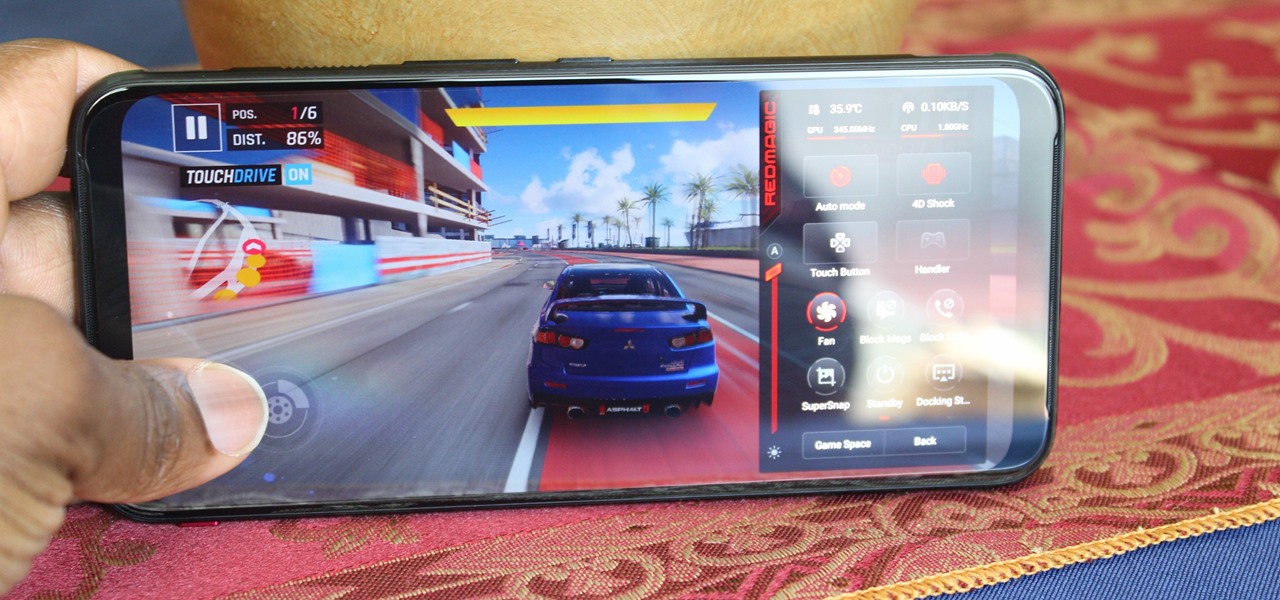


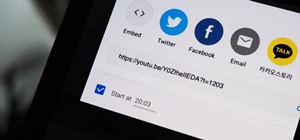
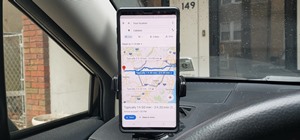
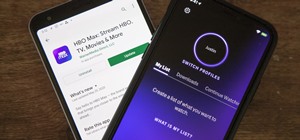
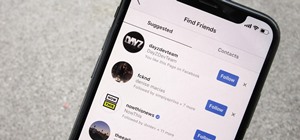

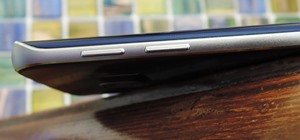
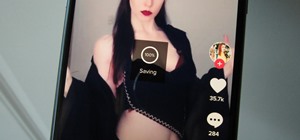




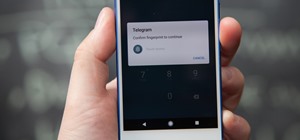
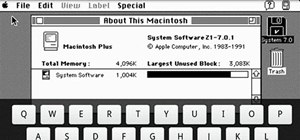
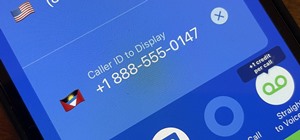


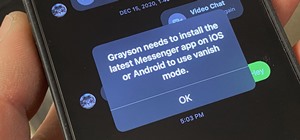

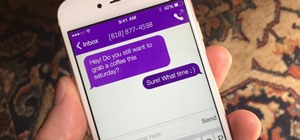
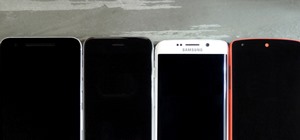
Be the First to Comment
Share Your Thoughts